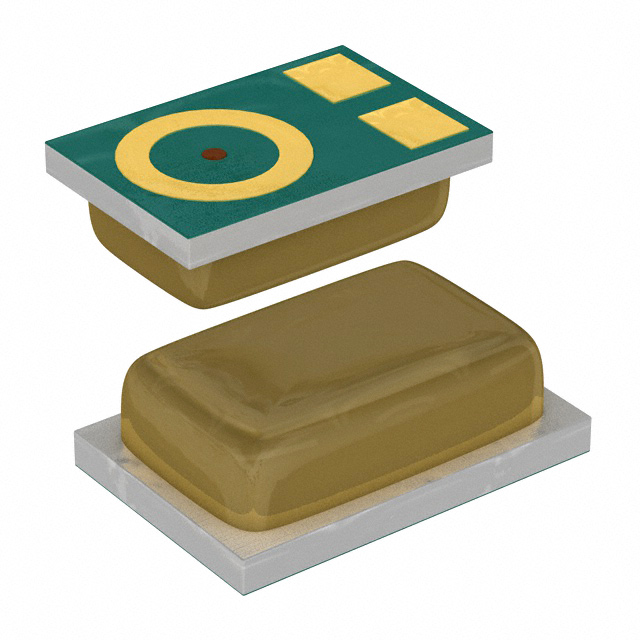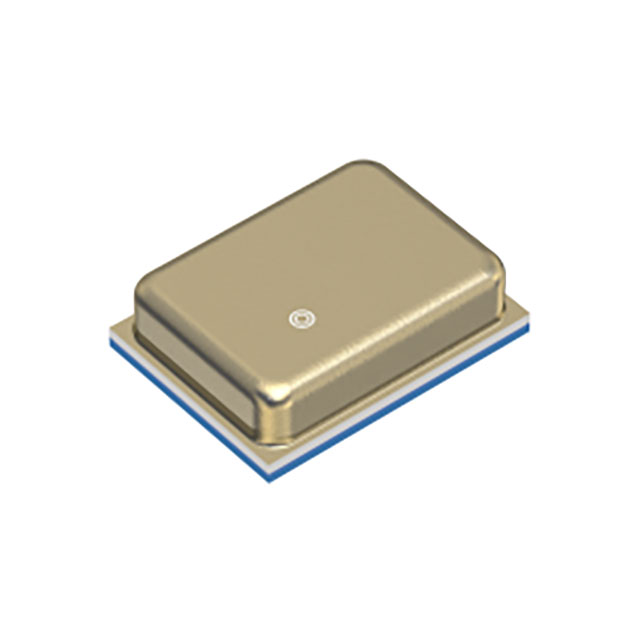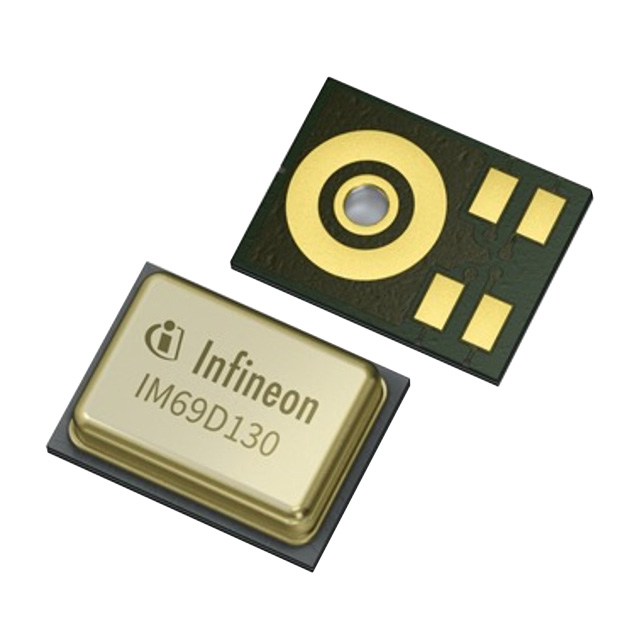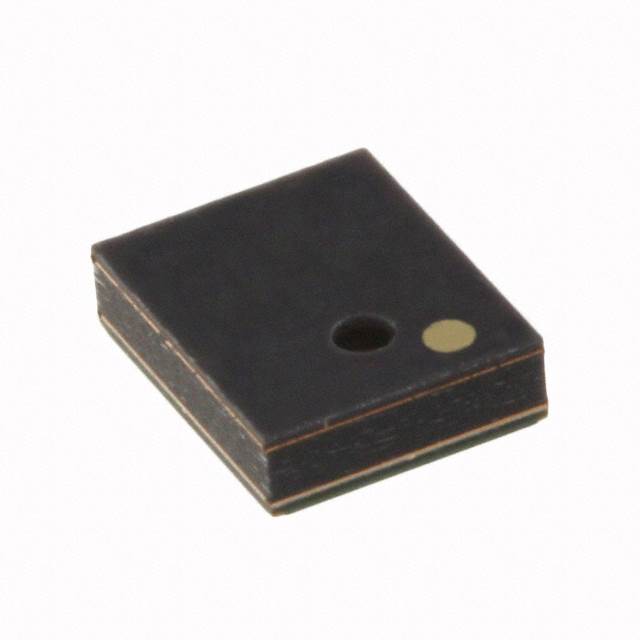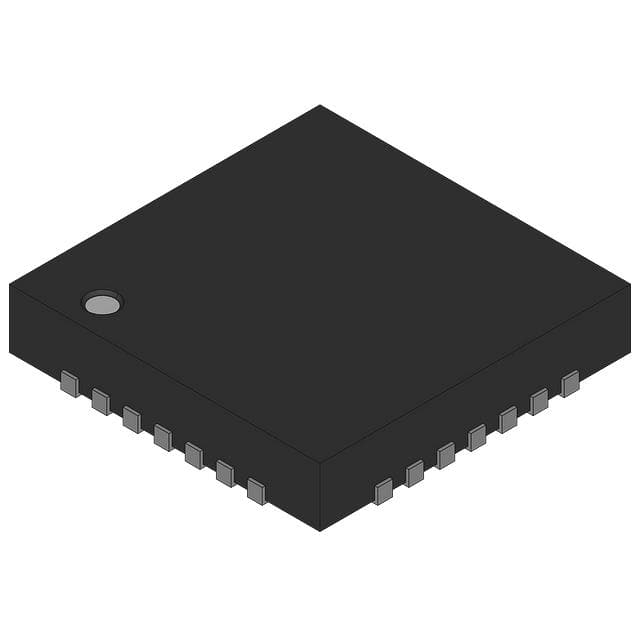Using the reference clock to realize serial communication data recovery of Cyclone10LP devices
In the non-source synchronous low-speed serial data communication scenario, the clock frequency of the communication counterpart may be biased, which may cause the data receiving end to be unable to accurately sample. In this case, the SOFT-CDR and DPA functions in the high-speed transceiver or LVDS serdes of high-end Altera devices can effectively solve this problem.
CR2032 vs CR2450 batteries: Which one is better for your device?
Many daily devices use CR2032 and CR2450 batteries because of their small size and reliable performance.
7408 Integrated Circuit: A Classic TTL (transistor-transistor logic) Type IC
The 7408 integrated circuit is a classic TTL (transistor-transistor logic) type IC, which is widely used in various digital circuits. It contains four 2-input AND gates, each with two inputs and one output, for performing logical AND operations.
What is Transistor hFE
hFE, also known as current gain or β (Beta), is an important parameter of the transistor, which represents the ratio between the base current and the collector current. It describes the gain capability of a transistor when amplifying current.
IGBT vs. MOSFET: A Comprehensive Comparison of Features
Both IGBTs and MOSFETs are important semiconductor devices that are widely used in power electronics, switching power supplies, and other high-power control systems. They can both be used to control the flow of current, but their operating principles, characteristics, and application scenarios differ.
WiFi 7 vs WiFi 6: Wireless Network Routing Comparison
WiFi 7 (802.11be) and WiFi 6 (802.11ax) are both wireless network communications standards, but they have significant differences in performance, spectral efficiency, latency, and the number of devices they support.
ENIG vs ENEPIG PCB: Explore the Difference
The choice of PCB surface finish is more than just a detail; it determines the performance and lifespan of the PCB. The versatile and robust Electroless Nickel Electroless Palladium Immersion Gold (ENEPIG) and the reliable and classic Electroless Nickel Immersion Gold (ENIG).
The automotive crystal oscillator FA-238A is the preferred choice for car Bluetooth
Epson FA-238A is a high-performance quartz crystal oscillator widely used in automotive, industrial and consumer electronics fields. It is particularly suitable for automotive-grade and high-reliability applications, with excellent temperature stability, low power consumption and high precision.
What are the differences between tantalum capacitors and ordinary capacitors
Tantalum capacitors are often used in high-precision circuits due to their high reliability, stability and small size, but due to their high price and polarity requirements, special attention should be paid to the connection polarity during design.
What is a clamping diode? Principle, function and application analysis
Clamping diodes are a common electronic component, also known as protection diodes or baropendulum diodes.
Four Common Topological Approaches to Powering LEDs
There are many topologies that can be used to power LEDs. As you probably already know, you need to first identify your design requirements before you start selecting, or you may end up with a design that is less than ideal or, worse, not guaranteed to work properly over the long term.
Regionalization Trend of Global Electronic Component Manufacturing: The Impact of Multinational Joint Ventures and Supply Chain Diversification
As global supply chain pressure increases, more and more electronic component companies are establishing production bases in places such as India and Southeast Asia, promoting the regionalization of supply chains.
US CHIPS Act 2024 in-depth implementation: How to reshape the global semiconductor supply chain and the future of technology
In August 2024, as the CHIPS Act is further promoted, the United States strives to localize the semiconductor industry and reduce external dependence. This strategic transformation is reshaping the global chip supply chain and is crucial to the future development of emerging technology fields such as AI and big data. This article deeply analyzes how the CHIPS Act reshapes the global supply chain and brings key industry impacts.
Hisense TVs sold out in Walmart on Black Friday
During this year's Black Friday promotion, Hisense TVs once again became a hot-selling product in the United States. Recently, a large number of videos of Americans rushing to buy Hisense TVs appeared on social media.
Electronic clock based on STC89C52 single chip microcomputer
Based on STC89C52 single chip microcomputer, it realizes the functions of electronic clock display and adjustment and calendar display and adjustment.
Electronic clock based on STC89C52 single chip microcomputer

Realization of electronic clock based on STC89C52 single chip microcomputer
Program code:
#include
#include
#define uchar unsigned char
#define uint unsigned int
// -----Digital tube------
sbit smg0=P2^2; //Position selection
sbit smg1=P2^3;
sbit smg2=P2^4;
#define duan P0 //Segment Selection
// Without decimal point
uchartable[]={~0xC0,~0xF9,~0xA4,~0xB0,~0x99,~0x92,~0x82,~0xF8,~0x80,~0x90,~0xBF;
// With decimal point
uchar table_dot[]={0xbf,0x86,0xdb,0xcf,0xe6,0xed,0xfd,0x87,0xff,0xef,~0xBF};
// -------------Timer-------------------
#define T0time 46070
uchar count=0; //Timing 1 second T0 needs to cycle times
//---------Global Flags ------------
//Indicates which interface is currently displayed.
uchar whereNow; //0: Clock interface; 1: Time adjustment interface; 2: Calendar interface;
sbit K1=P3^1;
sbit K2=P3^0;
sbit K3=P3^2;
sbit K4=P3^3;
//The selected position flashes the count mark
#define shanCount 128
uchar blankCount;//Blank display Count mark
uchar normalCount;//Normal display Count mark
//------------------- clock ------------
uchar shi=0,fen=0,miao=0; //Clock hours, minutes, seconds Initial data
//----------------------- Time Adjustment-------------------
uchar clockSetLocation;//The selected position of the record adjustment is 0, does not flash, and the plus and minus buttons cannot be used
//------------------- calendar -------------------
uchar cldSetLocation;//Records the selected location when setting the alarm
uint year=2023; //Calendar Year Initial Data
uchar month=11,day=11;//Calendar Month, Day Initial Data
#define minYear 2020
#define maxYear 2050
//Set the upper and lower limits of the year that can be displayed on the calendar
bit isLeapYear; //Indicates whether it is a leap year: 1 for yes; 0 for no.
bit cldSetOrNot;//Indicates whether the calendar is being set
uchar commonYearTable[]={0,31,28,31,30,31,30,31,31,30,31,30,31};//Record the number of days in each month in a common year
uchar leapYearTable[]={0,31,29,31,30,31,30,31,31,30,31,30,31}; //Record the number of days in each month in a leap year
//The first element is just to make the subscript correspond to the month, that is, January corresponds to index[1]
//--------------------------------------------------------------------------------
void delay() //Short delay
{
uchar i;
for(i=0;i<128;i++);
}
void delay_10ms(uchar c) //Keyboard delay function 10ms
{
uchar a,b;
for(;c>0;c--)
for(b=38;b>0;b--)
for(a=130;a>0;a--);
}
void smg(uchar wei,uchar number)//A single position of the digital tube lights up
{
switch(wei)//Decode and bit select
{
case 7:smg2=1;smg1=1;smg0=1;break;
case 6:smg2=1;smg1=1;smg0=0;break;
case 5:smg2=1;smg1=0;smg0=1;break;
case 4:smg2=1;smg1=0;smg0=0;break;
case 3:smg2=0;smg1=1;smg0=1;break;
case 2:smg2=0;smg1=1;smg0=0;break;
case 1:smg2=0;smg1=0;smg0=1;break;
case 0:smg2=0;smg1=0;smg0=0;break;
}
duan=number;//Segment Selection
delay();//Short delay
duan=0x00;//Vanish
}
//-----------------------Timer T0 initialization----------------------
void timer0_initial(){
TMOD=0x01;
TH0=(65536-T0time)/256;//The crystal oscillator is 11.0592MHZ
TL0=(65536-T0time)%256;
EA=1;
ET0=1;
TR0=1;
TR1=0;
}
//----------------------Determine whether it is a leap year-----------------------
void is_leap_year(){
if((year%4==0 && year%100!=0) || (year%400==0))
isLeapYear=1;
else
isLeapYear=0;
}
//----------------------Interrupt service function--------------------
void serviceTimer0() interrupt 1{
TH0=(65536-T0time)/256;//Timer reassignment
TL0=(65536-T0time)%256;
count++;//Timer count flag + 1
if(20==count)//When the timer reaches 20 times, the second increases by 1.
{
miao++;
count=0;//Timer count reset
}
if(60==miao)//When the second count reaches 60 times, the minute +1
{
fen++;
miao=0;//Reset the seconds count
}
if(60==fen)//When the count reaches 60 times, the hour is increased by 1
{
shi++;
fen=0;//Clear minute count
}
if(24==shi)//When the hour count reaches 24 times, +1 per day
{
day++;
shi=0;//Hour count reset
}
if(0==isLeapYear)//If it is a normal year
{
if(day>commonYearTable[month])
{
day=1;//If the day count exceeds the number of days in this month, it becomes 1
month++;
}
}else //If it is a leap year
{
if(day>leapYearTable[month])
{
day=1;//If the day count exceeds the number of days in this month, it becomes 1
month++;
}
}
if(month>12)
{
month=1;//If the month count exceeds 12, it becomes 1
year++;
}
if(year>maxYear)
{
year=minYear;//If the year count exceeds a certain limit, it becomes the minimum year
}
}
//-------------------------Digital tube dynamic display clock interface -------------------
void clock_display(){
//Tens of the hour
//If the position is being adjusted and the blink blank count is not 0, the position continues to be blanked.
if(1==clockSetLocation&&blankCount>0)
{
smg(7,0x00);
blankCount--;
}
//If the position is being adjusted and the flash normal count is not 0, the position continues to display normally.
else if(1==clockSetLocation&&normalCount>0)
{
smg(7,table[shi/10]);
normalCount--;
}else if(1==clockSetLocation)
{
blankCount=shanCount;//Flashing logo initialization
normalCount=shanCount;
}else
smg(7,table[shi/10]);
//The unit digit of the hour
//If this position is being adjusted and the flashing blank count is not 0, this position will continue to be blank
if(1==clockSetLocation&&blankCount>0)
{
smg(6,0x00);
blankCount--;
}
//If the position is being adjusted and the flash normal count is not 0, the position continues to display normally.
else if(1==clockSetLocation&&normalCount>0)
{
smg(6,table[shi%10]);
normalCount--;
}else if(1==clockSetLocation)
{
blankCount=shanCount;//Flashing logo initialization
normalCount=shanCount;
}else
smg(6,table[shi%10]);
//-
smg(5,table[10]);
// Tens place
//If the position is being adjusted and the blink blank count is not 0, the position continues to be blanked.
if(2==clockSetLocation&&blankCount>0)
{
smg(4,0x00);
blankCount--;
}
//If the position is being adjusted and the flash normal count is not 0, the position continues to display normally.
else if(2==clockSetLocation&&normalCount>0)
{
smg(4,table[fen/10]);
normalCount--;
}else if(2==clockSetLocation)
{
blankCount=shanCount;//Flashing logo initialization
normalCount=shanCount;
}else
smg(4,table[fen/10]);
//The unit of the minute
//If the position is being adjusted and the blink blank count is not 0, the position continues to be blanked.
if(2==clockSetLocation&&blankCount>0)
{
smg(3,0x00);
blankCount--;
}
//If the position is being adjusted and the flash normal count is not 0, the position continues to display normally.
else if(2==clockSetLocation&&normalCount>0)
{
smg(3,table[fen%10]);
normalCount--;
}else if(2==clockSetLocation)
{
blankCount=shanCount;//Flashing logo initialization
normalCount=shanCount;
}else
smg(3,table[fen%10]);
//-
smg(2,table[10]);
//Tens of seconds
//If the position is being adjusted and the blink blank count is not 0, the position continues to be blanked.
if(3==clockSetLocation&&blankCount>0)
{
smg(1,0x00);
blankCount--;
}
//If the position is being adjusted and the flash normal count is not 0, the position continues to display normally.
else if(3==clockSetLocation&&normalCount>0)
{
smg(1,table[miao/10]);
normalCount--;
}else if(3==clockSetLocation)
{
blankCount=shanCount;//Flashing logo initialization
normalCount=shanCount;
}else
smg(1,table[miao/10]);
//Units of seconds
//If the position is being adjusted and the blink blank count is not 0, the position continues to be blanked.
if(3==clockSetLocation&&blankCount>0)
{
smg(0,0x00);
blankCount--;
}
//If the position is being adjusted and the flash normal count is not 0, the position continues to display normally.
else if(3==clockSetLocation&&normalCount>0)
{
smg(0,table[miao%10]);
normalCount--;
}else if(3==clockSetLocation)
{
blankCount=shanCount;//Flashing logo initialization
normalCount=shanCount;
}else
smg(0,table[miao%10]);
}
//--------------------------Time Adjustment -------------------
void clock_set(){
if(0==K1 && 0==whereNow) //If you press the time adjustment button K1 in the clock interface
{
delay_10ms(3);//Debounce
if(0==K1)//Check the button status again
{
while(0==K1);//Long press to wait
delay_10ms(3);//Debounce
whereNow=1;
clockSetLocation=1;
TR0=0;
}
}
if(1==whereNow) //Enter the time adjustment interface, and the 4 independent buttons become time adjustment related buttons
{
if(0==K1)//If you press K1: adjust the position
{
delay_10ms(3);//Debounce
if(0==K1)//Check the button status again
{
while(0==K1);//Long press to stay here
delay_10ms(3);//Debounce
clockSetLocation++;//Position marker +1
if(clockSetLocation>3)clockSetLocation=1;
}
}
if(1==clockSetLocation)//Add and subtract hours
{
if(0==K2)//Press K2: Number -1
{
delay_10ms(3);//Debounce
if(0==K2)//Check the button status again
{
while(0==K2);//Long press to stay here
delay_10ms(3);//Debounce
if(0==shi)shi=24;
shi--;
}
}
if(0==K3)//Press K3: Number +1
{
delay_10ms(3);//Debounce
if(0==K3)//Check the button status again
{
while(0==K3);//Long press to stay here
delay_10ms(3);//Debounce
shi++;
if(24==shi)shi=0;
}
}
}
if(2==clockSetLocation)//Add and subtract points
{
if(0==K2)//Press K2: Number -1
{
delay_10ms(3);//Debounce
if(0==K2)//Check the button status again
{
while(0==K2);//Long press to stay here
delay_10ms(3);//Debounce
if(0==fen)fen=60;
fen--;
}
}
if(0==K3)//Press K3: Number +1
{
delay_10ms(3);//Debounce
if(0==K3)//Check the button status again
{
while(0==K3);//Long press to stay here
delay_10ms(3);//Debounce
fen++;
if(60==fen)fen=0;
}
}
}
if(3==clockSetLocation)//Add and subtract seconds
{
if(0==K2)//Press K2: Number -1
{
delay_10ms(3);//Debounce
if(0==K2)//Check the button status again
{
while(0==K2);//Long press to stay here
delay_10ms(3);//Debounce
if(0==miao)miao=60;
miao--;
}
}
if(0==K3)//Press K3: Number +1
{
delay_10ms(3);//Debounce
if(0==K3)//Check the button status again
{
while(0==K3);//Long press to stay here
delay_10ms(3);//Debounce
miao++;
if(60==miao)miao=0;
}
}
}
if(0==K4)//If K4 is pressed: confirm and exit the time adjustment mode, then return to the clock interface
{
delay_10ms(3);//Debounce
if(0==K4)//Check the button status again
{
while(0==K4);//Long press to stay here
delay_10ms(3);//Debounce
clockSetLocation=0;
whereNow=0;
TR0=1;
}
}
}
}
//------------------------Digital tube dynamic display calendar interface-------------------
void cld_display(){
//Thousands of the year
//If the position is being adjusted and the blink blank count is not 0, the position continues to be blanked.
if(1==cldSetLocation&&blankCount>0)
{
smg(7,0x00);
blankCount--;
}
//If the position is being adjusted and the flash normal count is not 0, the position continues to display normally.
else if(1==cldSetLocation&&normalCount>0)
{
smg(7,table[year/1000]);
normalCount--;
}else if(1==cldSetLocation)
{
blankCount=shanCount;//Flashing logo initialization
normalCount=shanCount;
}else
smg(7,table[year/1000]);
//Hundreds of the year
//If the position is being adjusted and the blink blank count is not 0, the position continues to be blanked.
if(1==cldSetLocation&&blankCount>0)
{
smg(6,0x00);
blankCount--;
}
//If the position is being adjusted and the flash normal count is not 0, the position continues to display normally.
else if(1==cldSetLocation&&normalCount>0)
{
smg(6,table[year/100%10]);
normalCount--;
}else if(1==cldSetLocation)
{
blankCount=shanCount;//Flashing logo initialization
normalCount=shanCount;
}else
smg(6,table[year/100%10]);
//Tens of the year
//If the position is being adjusted and the blink blank count is not 0, the position continues to be blanked.
if(1==cldSetLocation&&blankCount>0)
{
smg(5,0x00);
blankCount--;
}
//If the position is being adjusted and the flash normal count is not 0, the position continues to display normally.
else if(1==cldSetLocation&&normalCount>0)
{
smg(5,table[year%100/10]);
normalCount--;
}else if(1==cldSetLocation)
{
blankCount=shanCount;//Flashing logo initialization
normalCount=shanCount;
}else
smg(5,table[year%100/10]);
//Year digits
//If the position is being adjusted and the blink blank count is not 0, the position continues to be blanked.
if(1==cldSetLocation&&blankCount>0)
{
smg(4,0x00);
blankCount--;
}
//If the position is being adjusted and the flash normal count is not 0, the position continues to display normally.
else if(1==cldSetLocation&&normalCount>0)
{
smg(4,table_dot[year%10]);
normalCount--;
}else if(1==cldSetLocation)
{
blankCount=shanCount;//Flashing logo initialization
normalCount=shanCount;
}else
smg(4,table_dot[year%10]);
//Tenth digit of the month
//If the position is being adjusted and the blink blank count is not 0, the position continues to be blanked.
if(2==cldSetLocation&&blankCount>0)
{
smg(3,0x00);
blankCount--;
}
//If the position is being adjusted and the flash normal count is not 0, the position continues to display normally.
else if(2==cldSetLocation&&normalCount>0)
{
smg(3,table[month/10]);
normalCount--;
}else if(2==cldSetLocation)
{
blankCount=shanCount;//Flashing logo initialization
normalCount=shanCount;
}else
smg(3,table[month/10]);
//Month's digit
//If the position is being adjusted and the blink blank count is not 0, the position continues to be blanked.
if(2==cldSetLocation&&blankCount>0)
{
smg(2,0x00);
blankCount--;
}
//If the position is being adjusted and the flash normal count is not 0, the position continues to display normally.
else if(2==cldSetLocation&&normalCount>0)
{
smg(2,table_dot[month%10]);
normalCount--;
}else if(2==cldSetLocation)
{
blankCount=shanCount;//Flashing logo initialization
normalCount=shanCount;
}else
smg(2,table_dot[month%10]);
//Tens of the day
//If the position is being adjusted and the blink blank count is not 0, the position continues to be blanked.
if(3==cldSetLocation&&blankCount>0)
{
smg(1,0x00);
blankCount--;
}
//If the position is being adjusted and the flash normal count is not 0, the position continues to display normally.
else if(3==cldSetLocation&&normalCount>0)
{
smg(1,table[day/10]);
normalCount--;
}else if(3==cldSetLocation)
{
blankCount=shanCount;//Flashing logo initialization
normalCount=shanCount;
}else
smg(1,table[day/10]);
//Units of the day
//If the position is being adjusted and the blink blank count is not 0, the position continues to be blanked.
if(3==cldSetLocation&&blankCount>0)
{
smg(0,0x00);
blankCount--;
}
//If the position is being adjusted and the flash normal count is not 0, the position continues to display normally.
else if(3==cldSetLocation&&normalCount>0)
{
smg(0,table_dot[day%10]);
normalCount--;
}else if(3==cldSetLocation)
{
blankCount=shanCount;//Flashing logo initialization
normalCount=shanCount;
}else
smg(0,table_dot[day%10]);
}
//----------------------Calendar Settings------------------------
void cld_set()
{
if(0==whereNow && 0==K3)//If you press the calendar button K3 on the clock interface
{
delay_10ms(3);//Debounce
if(0==K3)//Check the button status again
{
while(0==K3);//Long press to wait
delay_10ms(3);//Debounce
whereNow=3;
}
}
if(3==whereNow)//If you are in the calendar interface, the four independent buttons will become calendar-related buttons.
{
if(0==K1)//If you press K1: adjust the position
{
delay_10ms(3);//Debounce
if(0==K1)//Check the button status again
{
while(0==K1);//Long press to stay here
delay_10ms(3);//Debounce
cldSetLocation++;//Position marker +1
if(cldSetLocation>3)cldSetLocation=1;
}
}
if(1==cldSetLocation)//Add and subtract years
{
if(0==K2)//Press K2: Number -1
{
delay_10ms(3);//Debounce
if(0==K2)//Check the button status again
{
while(0==K2);//Long press to stay here
delay_10ms(3);//Debounce
if(minYear==year)year=minYear+1;//Set the calendar year to the minimum and it cannot be reduced any further
year--;
}
}
if(0==K3)//Press K3: Number +1
{
delay_10ms(3);//Debounce
if(0==K3)//Check the button status again
{
while(0==K3);//Long press to stay here
delay_10ms(3);//Debounce
year++;
if(maxYear+1==year)year=maxYear;//Set the calendar year to the maximum limit and no more can be added
}
}
}
if(2==cldSetLocation)//Add or subtract months
{
if(0==K2)//Press K2: Number -1
{
delay_10ms(3);//Debounce
if(0==K2)//Check the button status again
{
while(0==K2);//Long press to stay here
delay_10ms(3);//Debounce
if(1==month)month=13;
month--;
}
}
if(0==K3)//Press K3: Number +1
{
delay_10ms(3);//Debounce
if(0==K3)//Check the button status again
{
while(0==K3);//Long press to stay here
delay_10ms(3);//Debounce
month++;
if(13==month)month=1;
}
}
}
if(3==cldSetLocation)//Add and subtract days
{
if(0==K2)//Press K2: Number -1
{
delay_10ms(3);//Debounce
if(0==K2)//Check the button status again
{
while(0==K2);//Long press to stay here
delay_10ms(3);//Debounce
if(day<=1)
{
if(0==isLeapYear)//If it is a normal year
day=commonYearTable[month]+1;
if(1==isLeapYear)//If it is a leap year
day=leapYearTable[month]+1;
}
day--;
}
}
if(0==K3)//Press K3: Number +1
{
delay_10ms(3);//Debounce
if(0==K3)//Check the button status again
{
while(0==K3);//Long press to stay here
delay_10ms(3);//Debounce
day++;
if(0==isLeapYear)//If it is a normal year
{
if(day>commonYearTable[month])day=1;
}
if(1==isLeapYear)//If it is a leap year
{
if(day>leapYearTable[month])day=1;
}
}
}
}
if(0==K4)//If K4 is pressed: confirm and exit the calendar interface, then return to the clock interface
{
delay_10ms(3);//Debounce
if(0==K4)//Check the button status again
{
while(0==K4);//Long press to stay here
delay_10ms(3);//Debounce
cldSetLocation=0;
whereNow=0;
}
}
}
}
void main()
{
clockSetLocation=0;
cldSetOrNot=0;
cldSetLocation=0; //The position flags and whether to adjust flags of each interface are initialized to 0
whereNow=0; //By default, it starts in the clock interface
blankCount=shanCount;
normalCount=shanCount;//Flash count flag initialization
timer0_initial(); //Timer T0 initialization
while(1)
{
is_leap_year(); //Determine whether it is a leap year
if(0==whereNow || 1==whereNow)
clock_display();//Digital tube dynamic display clock interface
clock_set(); //Time adjustment (same interface as clock)
if(3==whereNow)
cld_display();//Digital tube dynamic display calendar interface
cld_set(); //Calendar Settings
}
}
Implementation effect and function analysis
The above program mainly realizes the functions of electronic clock display and adjustment and calendar display and adjustment.
Digital tube:
Three pins smg0, smg1, smg2 for controlling digital tube bit selection and pin duan for digital tube segment selection are defined.
The display code table table of common cathode digital tube and the display code table table_dot with decimal point are defined.
The smg() function is used to display a specific number at a specific position of the digital tube.
Timer:
Timer T0 is used to count time and control the dynamic display of the digital tube.
T0time defines the timing parameters of timer T0.
The timer0_initial() function is used to initialize timer T0.
The serviceTimer0() function is the interrupt service function of timer T0, which is used to process the timing logic of the clock.
Global flags:
whereNow indicates the currently displayed interface, 0 is the clock interface, 1 is the time adjustment interface, and 2 is the calendar interface.
clockSetLocation records the location selected when adjusting the time, 1 means adjusting the hour, 2 means adjusting the minute, and 3 means adjusting the second.
cldSetLocation records the location selected when setting the calendar, 1 means adjusting the year, 2 means adjusting the month, and 3 means adjusting the day.
Timing and time calculation:
Count is used for timing, and the seconds, minutes, hours, etc. are increased every certain number of times (20 times).
The serviceTimer0() function is the interrupt service function of timer T0, which is used to update the time.
Clock display and time adjustment:
The clock_display() function is used to dynamically display the clock on the clock interface.
The clock_set() function is used to adjust the clock on the time adjustment interface.
Calendar display and setting:
The cld_display() function is used to dynamically display the date on the calendar interface.
The cld_set() function is used to adjust the date on the calendar setting interface.
Main function:
Initialize various flags and timers.
Enter the main loop and call the corresponding display and operation functions according to the current interface.
Function:
Clock part:
After booting up, the system will enter the clock interface by default and start counting from 00-00-00
Press and hold K1 to enter adjustment mode. K1 can select the adjustment position, K2 means "minus 1", and K3 means "plus 1"
If the hour part is adjusted to 23 hours, K3 will change it to 00. The other time adjustments are set in the same way.
K4 is the confirmation key. Once the adjusted time is confirmed, K4 will return to the clock interface and start timing from the time just adjusted.
Calendar part:
After power-on, the default interface is the clock interface, and the K3 enters the calendar interface. The default date of the calendar is 2023.12.12. The adjustment process is similar to the clock adjustment.
Effect picture:
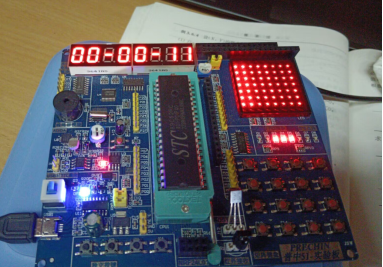
Figure 1 Clock interface 00-00-11

Figure 2 Clock interface after time adjustment 05-56-33

Figure 3 Calendar interface Default 2023.12.12

Figure 4 The calendar interface after the date is modified 2024.12.12
The digital clock effect is successfully realized, including the display of hours, minutes and seconds and the function setting of adjusting the time by buttons.
